Punca Pigmentasi di Muka: Memahami Masalah dan Penyelesaiannya
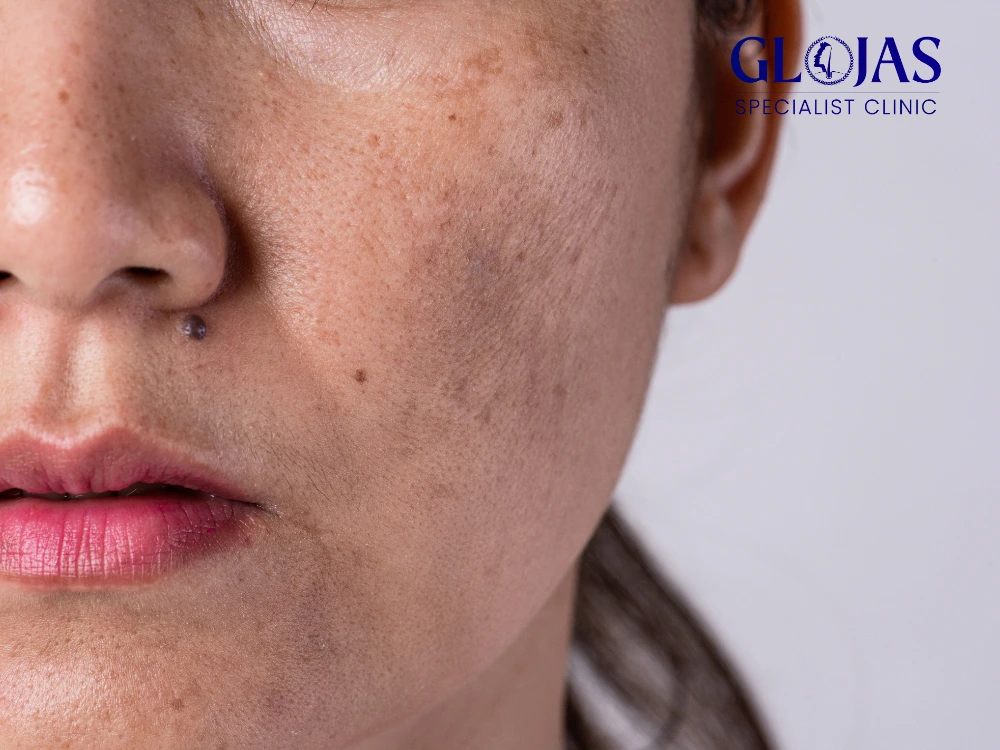
Pigmentasi di muka adalah isu kulit yang biasa dialami oleh ramai orang. Ia merujuk kepada perubahan warna pada kulit yang disebabkan oleh pengeluaran melanin yang berlebihan. Dalam artikel ini, kita akan mendalami punca-punca pigmentasi di muka, bagaimana ia terjadi, jenis-jenis pigmentasi, serta langkah-langkah yang boleh diambil untuk mencegah dan merawatnya. Apa Itu Pigmentasi? Pigmentasi adalah proses di mana kulit menghasilkan melanin, sebatian yang memberikan warna pada kulit, rambut, dan mata. Melanin dihasilkan oleh sel-sel yang dikenali sebagai melanosit. Apabila melanosit berfungsi secara berlebihan, ia boleh menyebabkan kemunculan bintik-bintik gelap pada kulit. Pigmentasi di muka boleh muncul dalam pelbagai bentuk, termasuk bintik usia, bintik matahari, dan melasma. Jenis-Jenis Pigmentasi di Muka Bintik Usia (Solar Lentigines): Bintik-bintik ini muncul akibat pendedahan kepada sinaran UV dari matahari. Mereka biasanya berwarna coklat atau hitam dan sering kali muncul seiring dengan peningkatan usia. Melasma: Ini adalah bentuk pigmentasi yang sering muncul pada wanita, terutamanya semasa kehamilan. Melasma biasanya ditandai dengan bintik-bintik gelap di dahi, pipi, dan atas bibir. Hipermelanositosis: Merujuk kepada peningkatan pengeluaran melanin dalam kawasan tertentu. Ini boleh disebabkan oleh keradangan atau kecederaan pada kulit. Bintik Matahari: Bintik-bintik ini terbentuk akibat pendedahan berpanjangan kepada sinaran matahari. Mereka boleh menjadi lebih jelas pada kulit yang lebih cerah. Punca Pigmentasi di Muka Terdapat pelbagai punca yang boleh menyebabkan pigmentasi di muka. Mari kita teliti beberapa punca utama yang sering dikenalpasti: 1. Pendedahan kepada Cahaya Matahari Salah satu punca pigmentasi di muka yang paling biasa adalah pendedahan kepada cahaya matahari. Sinar UVB dan UVA dalam cahaya matahari boleh merosakkan sel-sel kulit dan merangsang pengeluaran melanin berlebihan. Individu yang terdedah kepada sinar matahari tanpa perlindungan yang mencukupi berisiko tinggi untuk mengalami bintik usia dan pigmentasi lain. Oleh itu, penting untuk menggunakan pelindung matahari yang berkesan untuk melindungi kulit. 2. Perubahan Hormon Perubahan hormon juga merupakan punca pigmentasi di muka, terutamanya melasma. Wanita sering mengalami melasma semasa kehamilan, apabila tahap estrogen dan progesteron meningkat. Keadaan ini boleh menyebabkan pengeluaran melanin yang berlebihan di kawasan tertentu pada wajah. Penggunaan pil perancang juga boleh menjadi faktor penyumbang, di mana perubahan hormon boleh mempengaruhi keseimbangan melanin dalam kulit. 3. Kecederaan dan Keradangan Kulit Kecederaan atau keradangan pada kulit, seperti jerawat atau eksim, boleh menjadi punca pigmentasi di muka. Proses penyembuhan yang berlaku selepas kecederaan sering merangsang melanosit untuk menghasilkan lebih banyak melanin. Ini menyebabkan kawasan yang terjejas menjadi lebih gelap. Oleh itu, penjagaan yang betul untuk kulit yang berjerawat atau mengalami keradangan adalah penting untuk mengurangkan risiko pigmentasi. 4. Keturunan Faktor genetik juga memainkan peranan dalam penghasilan pigmentasi di muka. Jika terdapat sejarah keluarga yang mempunyai masalah pigmentasi, kemungkinan besar anda juga akan mengalaminya. Keturunan boleh mempengaruhi bagaimana kulit anda bertindak balas terhadap pendedahan kepada sinar matahari dan faktor-faktor lain yang merangsang pengeluaran melanin. 5. Penuaan Proses penuaan secara semulajadi juga menjadi salah satu punca pigmentasi di muka. Seiring dengan pertambahan usia, kulit kita mengalami pelbagai perubahan, termasuk peningkatan pengeluaran melanin yang tidak sekata. Bintik-bintik gelap ini sering disebut sebagai bintik usia. Penuaan juga menyebabkan kulit menjadi lebih nipis dan kurang elastik, menjadikannya lebih terdedah kepada kerosakan akibat sinar UV. 6. Penggunaan Produk Kecantikan Sesetengah produk kecantikan yang mengandungi bahan kimia keras atau pengelupasan yang tidak sesuai boleh merosakkan kulit dan menyebabkan keradangan. Ini boleh menjadi punca pigmentasi di muka. Oleh itu, penting untuk memilih produk yang selamat dan sesuai dengan jenis kulit anda. Selalu lakukan ujian kepekaan sebelum menggunakan produk baru secara meluas. 7. Pemakanan dan Gaya Hidup Pemakanan yang tidak seimbang dan gaya hidup yang tidak sihat juga boleh mempengaruhi kesihatan kulit. Kekurangan vitamin dan mineral penting seperti vitamin C, vitamin E, dan zink boleh mengganggu proses regenerasi kulit dan meningkatkan risiko pigmentasi. Amalkan diet seimbang yang kaya dengan antioksidan untuk menjaga kesihatan kulit. 8. Stres Stres boleh memberi kesan negatif pada kesihatan kulit. Ia boleh merangsang pengeluaran hormon stres yang menyebabkan pelbagai masalah kulit, termasuk pigmentasi. Oleh itu, mengamalkan teknik pengurusan stres seperti meditasi, yoga, atau senaman dapat membantu mengurangkan kesan stres pada kulit. View this post on Instagram A post shared by Aesthetic Clinic Kuala Lumpur | Plastic Surgery, Hair Transplant (@glojasspecialist) Cara Mencegah Pigmentasi di Muka Mengetahui punca pigmentasi di muka adalah langkah pertama untuk mencegahnya. Berikut adalah beberapa langkah pencegahan yang boleh diambil: 1. Gunakan Pelindung Matahari Menggunakan pelindung matahari adalah salah satu cara terbaik untuk mencegah pigmentasi di muka. Pilih pelindung matahari dengan SPF 30 atau lebih tinggi dan sapukan secara merata ke seluruh wajah dan kawasan yang terdedah sebelum keluar rumah. Pastikan untuk mengulangi aplikasi setiap dua jam, terutamanya jika anda berada di luar untuk tempoh yang lama. 2. Hindari Pendedahan Matahari di Waktu Puncak Cuba untuk mengelakkan pendedahan langsung kepada cahaya matahari pada waktu puncak, iaitu antara pukul 10 pagi hingga 4 petang. Jika perlu berada di luar, pakai pakaian pelindung, topi lebar, dan cermin mata hitam untuk melindungi wajah anda daripada sinaran berbahaya. 3. Pilih Produk Kecantikan yang Sesuai Pilih produk kecantikan yang sesuai dengan jenis kulit anda. Elakkan menggunakan produk yang mengandungi bahan kimia keras yang boleh merosakkan kulit. Gunakan produk yang mengandungi bahan semulajadi dan selamat untuk merawat kulit sensitif. 4. Amalkan Pemakanan Seimbang Pemakanan yang sihat dan seimbang dapat membantu menjaga kesihatan kulit. Pastikan anda mengambil cukup buah-buahan, sayur-sayuran, dan makanan yang kaya dengan antioksidan untuk melindungi kulit daripada kerosakan. Minum air yang mencukupi juga penting untuk menjaga kelembapan kulit. 5. Lakukan Pemeriksaan Kulit Secara Berkala Melakukan pemeriksaan kulit secara berkala dengan pakar dermatologi boleh membantu mengenalpasti sebarang perubahan pada kulit anda lebih awal. Ini membolehkan rawatan yang sesuai dilakukan sebelum masalah menjadi lebih serius. 6. Hindari Stres Stres boleh memberi kesan negatif pada kesihatan kulit. Amalkan teknik pengurusan stres seperti meditasi, yoga, atau aktiviti fizikal untuk mengurangkan tekanan dan meningkatkan kesejahteraan secara keseluruhan. 7. Elakkan Merokok dan Pengambilan Alkohol Berlebihan Merokok dan pengambilan alkohol berlebihan boleh merosakkan kulit dan mempercepatkan proses penuaan. Jika anda merokok, pertimbangkan untuk menghentikannya, dan hadkan pengambilan alkohol untuk menjaga kesihatan kulit anda. Rawatan Pigmentasi di Muka Sekiranya anda sudah mengalami pigmentasi di muka, terdapat beberapa rawatan yang boleh membantu mengurangkan atau menghilangkannya:
Kos Pembedahan Gynecomastia: Panduan Lengkap
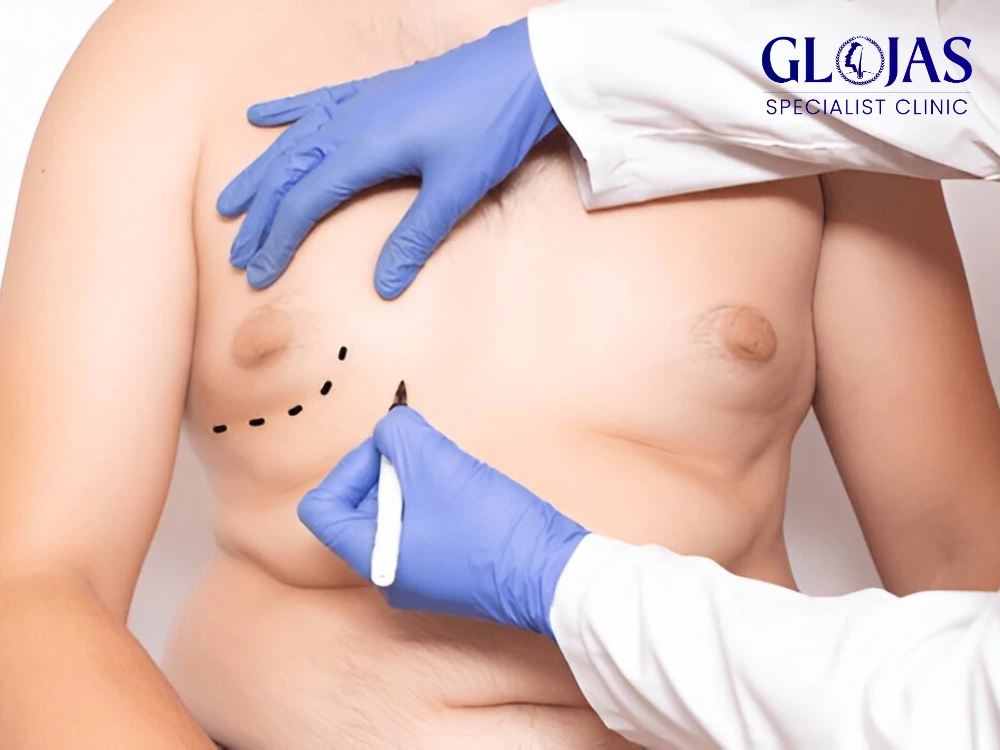
Gynecomastia adalah keadaan di mana terdapat pembesaran tisu payudara pada lelaki. Keadaan ini boleh memberi kesan yang besar terhadap kesejahteraan mental dan fizikal individu. Masalah ini sering menyebabkan ketidakselesaan, rasa rendah diri, dan kekurangan keyakinan diri, terutama dalam situasi sosial. Bagi mereka yang ingin mengatasi isu ini, pembedahan gynecomastia sering kali menjadi pilihan utama. Namun, satu soalan yang sering dibangkitkan adalah mengenai kos pembedahan gynecomastia. Artikel ini akan membincangkan kos pembedahan gynecomastia, faktor-faktor yang mempengaruhi kos, serta langkah-langkah yang perlu diambil sebelum dan selepas pembedahan. Apa Itu Gynecomastia? Sebelum membincangkan tentang kos pembedahan gynecomastia, adalah penting untuk memahami terlebih dahulu apa itu gynecomastia. Gynecomastia adalah keadaan di mana tisu payudara lelaki mengalami pembesaran disebabkan oleh pelbagai faktor, termasuk perubahan hormon, penggunaan ubat tertentu, obesiti, dan keadaan kesihatan tertentu seperti penyakit hati atau kegagalan buah pinggang. Keadaan ini bukan sahaja memberi kesan fizikal, tetapi juga menjejaskan emosi dan keyakinan diri lelaki yang mengalaminya. Pembedahan Gynecomastia Pembedahan gynecomastia adalah prosedur yang bertujuan untuk mengurangkan tisu payudara yang berlebihan. Terdapat beberapa teknik pembedahan yang boleh digunakan, bergantung kepada keadaan individu dan keperluan spesifik. Pembedahan ini boleh dilakukan menggunakan dua kaedah utama: Liposuction: Teknik ini digunakan untuk mengeluarkan lemak berlebihan dari kawasan payudara. Liposuction adalah kaedah yang kurang invasif dan sesuai untuk mereka yang mempunyai tisu payudara yang lebih banyak lemak berbanding tisu glandular. Pembedahan Terbuka: Jika terdapat tisu payudara yang lebih besar atau lebih tebal, pembedahan terbuka mungkin diperlukan. Prosedur ini melibatkan pemotongan dan pengeluaran tisu berlebihan, dan biasanya memerlukan pemulihan yang lebih lama. Kos Pembedahan Gynecomastia Kos pembedahan gynecomastia adalah salah satu pertimbangan utama bagi individu yang ingin menjalani prosedur ini. Secara purata, kos pembedahan gynecomastia di Malaysia boleh berkisar antara RM5,000 hingga RM15,000. Namun, harga ini boleh berbeza-beza bergantung kepada beberapa faktor, yang akan dibincangkan dalam seksyen berikut. View this post on Instagram A post shared by Aesthetic Clinic Kuala Lumpur | Plastic Surgery, Hair Transplant (@glojasspecialist) Faktor-faktor yang Mempengaruhi Kos Pembedahan Gynecomastia Terdapat beberapa faktor yang boleh mempengaruhi kos pembedahan gynecomastia, antaranya: Pengalaman dan Kepakaran Pakar Bedah Salah satu faktor utama yang mempengaruhi kos pembedahan gynecomastia adalah pengalaman dan reputasi pakar bedah. Pakar bedah yang mempunyai banyak pengalaman dan telah melakukan banyak prosedur gynecomastia mungkin mengenakan yuran yang lebih tinggi. Walaupun kos pembedahan gynecomastia mungkin lebih mahal, memilih pakar yang berkelayakan dan berpengalaman adalah penting untuk memastikan hasil yang baik dan mengurangkan risiko komplikasi. Jenis Prosedur yang Dilakukan Kos pembedahan gynecomastia juga bergantung kepada jenis prosedur yang dilakukan. Seperti yang dinyatakan sebelumnya, terdapat dua jenis utama prosedur: liposuction dan pembedahan terbuka. Kos pembedahan gynecomastia yang menggunakan teknik liposuction biasanya lebih rendah berbanding dengan prosedur pembedahan terbuka yang memerlukan lebih banyak masa dan usaha dari pakar bedah. Lokasi Pembedahan Lokasi di mana pembedahan dilakukan juga memainkan peranan dalam menentukan kos. Pembedahan yang dilakukan di pusat perubatan yang terkenal atau di bandar besar biasanya lebih mahal berbanding pembedahan yang dilakukan di klinik kecil atau di kawasan luar bandar. Oleh itu, pesakit perlu mempertimbangkan lokasi dan kemudahan yang ditawarkan oleh pusat pembedahan. Kos Penjagaan Pasca-Pembedahan Selain daripada kos pembedahan gynecomastia itu sendiri, pesakit juga perlu mengambil kira kos penjagaan pasca-pembedahan. Ini mungkin termasuk ubat-ubatan untuk menguruskan kesakitan dan keradangan, serta pemeriksaan susulan untuk memastikan pemulihan berjalan lancar. Semua kos ini perlu dimasukkan dalam anggaran keseluruhan. Keadaan Kesihatan Pesakit Keadaan kesihatan individu juga boleh mempengaruhi kos pembedahan gynecomastia. Pesakit dengan masalah kesihatan yang lain mungkin memerlukan pemeriksaan tambahan sebelum menjalani pembedahan. Sebagai contoh, pesakit yang mempunyai masalah jantung atau penyakit kronik mungkin memerlukan penilaian tambahan, yang boleh menambah kos keseluruhan. Manfaat Pembedahan Gynecomastia Setelah memahami kos pembedahan gynecomastia, adalah penting untuk mempertimbangkan manfaat yang boleh diperoleh daripada prosedur ini. Antara manfaat pembedahan gynecomastia adalah: Meningkatkan Keyakinan Diri: Pembedahan gynecomastia dapat membantu individu merasa lebih yakin dengan penampilan mereka. Ini boleh memberikan impak positif kepada interaksi sosial dan kualiti hidup secara keseluruhan. Mengurangkan Ketidakselesaan Fizikal: Dengan mengurangkan tisu payudara yang berlebihan, individu akan mengalami kurang ketidakselesaan semasa aktiviti fizikal atau ketika berpakaian. Ini sangat membantu bagi mereka yang terlibat dalam sukan atau aktiviti yang memerlukan pergerakan yang banyak. Hasil yang Kekal: Pembedahan gynecomastia memberikan hasil yang kekal jika pesakit menjaga gaya hidup sihat. Ini berbeza dengan rawatan lain yang mungkin memerlukan pemeliharaan berkala. Peningkatan Kualiti Hidup: Dengan mengatasi masalah fizikal yang dihadapi, ramai individu melaporkan peningkatan dalam kualiti hidup, termasuk peningkatan dalam aktiviti sosial dan hubungan interpersonal. Persediaan Sebelum Pembedahan Sebelum menjalani pembedahan gynecomastia, terdapat beberapa langkah persediaan yang perlu diambil: Konsultasi dengan Pakar: Berjumpa dengan pakar bedah untuk mendapatkan nasihat dan maklumat lanjut mengenai prosedur. Ini adalah peluang untuk membincangkan apa yang diharapkan daripada pembedahan dan sebarang kebimbangan yang mungkin ada. Ujian Kesihatan: Pesakit mungkin perlu menjalani ujian kesihatan untuk memastikan mereka berada dalam keadaan baik untuk menjalani pembedahan. Ujian ini mungkin termasuk ujian darah dan pemeriksaan fizikal. Menghentikan Penggunaan Ubat Tertentu: Jika pesakit mengambil ubat yang boleh meningkatkan risiko pendarahan, seperti aspirin atau ubat anti-inflamasi, mereka mungkin perlu menghentikannya sebelum pembedahan. Ini penting untuk mengurangkan risiko komplikasi semasa dan selepas pembedahan. Menetapkan Harapan yang Realistik: Penting bagi pesakit untuk mempunyai harapan yang realistik tentang hasil pembedahan. Berbincang dengan pakar tentang apa yang mungkin dan apa yang tidak mungkin dapat membantu menetapkan harapan yang tepat. Penjagaan Selepas Pembedahan Penjagaan selepas pembedahan gynecomastia adalah penting untuk memastikan pemulihan yang baik dan hasil yang memuaskan. Berikut adalah beberapa panduan penjagaan pasca-pembedahan: Ikut Arahan Doktor: Pesakit perlu mengikuti semua arahan yang diberikan oleh doktor mengenai penjagaan luka, pengambilan ubat, dan aktiviti fizikal. Ini termasuk cara menjaga kawasan pembedahan untuk mengelakkan jangkitan. Rehat yang Cukup: Rehat yang mencukupi adalah penting untuk proses penyembuhan. Pesakit perlu mengelakkan aktiviti fizikal yang berat selama beberapa minggu selepas pembedahan. Pemeriksaan Susulan: Pastikan untuk menghadiri semua janji temu pemeriksaan susulan dengan pakar bedah. Ini penting untuk memastikan pemulihan berjalan lancar dan tiada komplikasi. Mengawasi Tanda-Tanda Komplikasi: Pesakit perlu peka terhadap sebarang tanda-tanda komplikasi, seperti pendarahan berlebihan, jangkitan, atau kesakitan yang tidak dapat dikawal. Jika ada gejala yang mencurigakan, pesakit harus segera mendapatkan bantuan perubatan. Kos Pembedahan Gynecomastia di Malaysia Di
女性毛发移植:你需要了解的全部
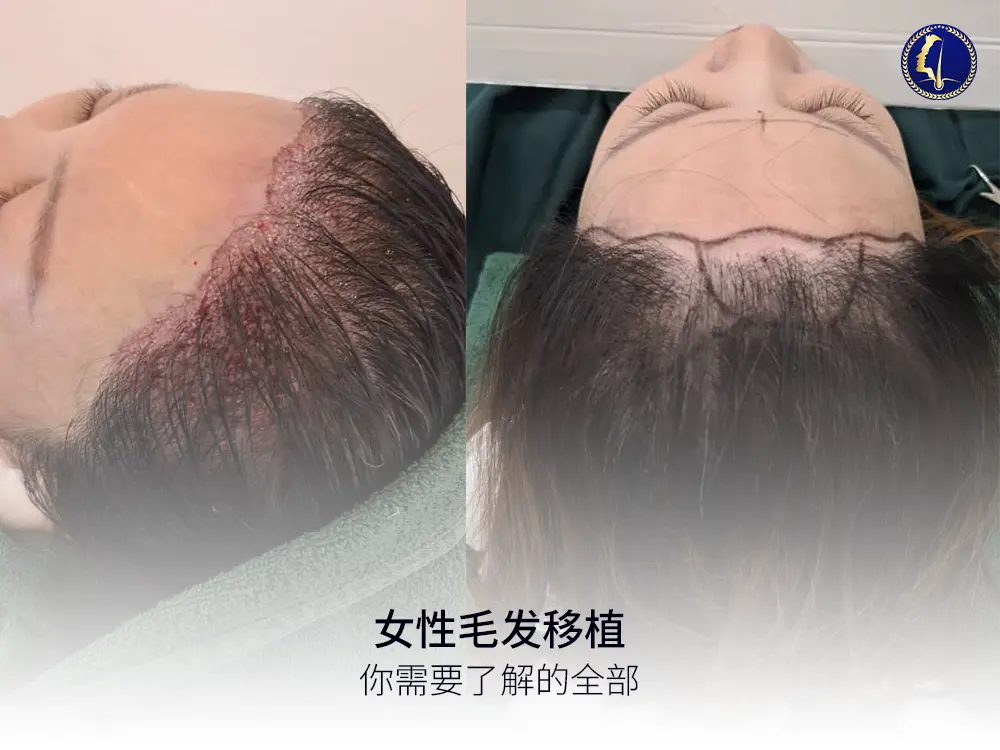
女性毛发移植 什么是女性毛发移植? 女性毛发移植是一种通过将健康的毛囊从供体区域移植到头皮稀疏或脱发区域来恢复头发密度的手术。虽然这种手术通常与男性脱发相关,但由于遗传、荷尔蒙变化、医学条件或生活方式因素,女性也可能经历头发稀疏或脱发。该手术是改善头发生长和自信心的长期解决方案。 女性脱发的原因 遗传因素: 女性型脱发(也称雄激素性脱发)可能来自父母一方。 荷尔蒙失衡: 怀孕、更年期、甲状腺疾病和多囊卵巢综合症(PCOS)可能导致头发稀疏。 医学问题: 自身免疫性疾病(如斑秃)、贫血和头皮感染可能导致脱发。 压力与生活方式: 高压力水平、不良饮食、过度造型和使用化学产品会削弱毛囊。 药物和治疗: 化疗、避孕药和某些抗抑郁药可能导致暂时或永久性脱发。 女性与男性毛发移植的区别 虽然男性和女性的毛发移植手术类似,但由于脱发模式和手术方式不同,两者存在明显区别: 1. 脱发模式 男性: 通常表现为发际线后退和头顶秃发。 女性: 通常表现为整个头皮弥漫性稀疏,难以找到稳定的供体区域。 2. 供体区域的考虑 男性: 供体区域(通常是头部后侧和两侧)稳定,不易脱发。 女性: 供体区域可能也存在稀疏现象,可供移植的健康毛囊数量较少。 3. 剃发要求 男性: 通常需要剃光整个头皮。 女性: 一般仅需部分剃发(供体区域)或不剃发,手术后更易掩盖。 4. 手术技术 男性: 可选择FUE(毛囊单位提取)或FUT(毛囊单位移植)。 女性: 更倾向于FUE技术,因其不会留下明显疤痕,并且不会影响整体发型。 5. 效果与期望 男性: 目标通常是重塑发际线,恢复更浓密的头发。 女性: 目标通常是增加头发密度,而非完全覆盖秃发区域。 女性毛发移植的步骤 1. 初步咨询 医生会评估头皮健康状况、毛发密度及病史,以确定是否适合进行毛发移植。 2. 选择适合的移植方法 目前主要有两种毛发移植技术: FUE(毛囊单位提取): 单个毛囊被提取并移植到稀疏区域,恢复期短,疤痕不明显。 FUT(毛囊单位移植): 从供体区域切取一小块带毛发的头皮,分离毛囊并进行移植,适用于大面积脱发患者。 3. 手术过程 毛囊会按照自然生长模式植入目标区域。手术通常采用局部麻醉,持续时间约为4至8小时。 4. 术后护理 术后48小时内避免洗头。 遵医嘱使用抗炎药物,防止感染。 避免剧烈运动,至少休息1至2周。 术后可能出现轻微肿胀和结痂,通常几天后消失。 女性毛发移植的费用 毛发移植的费用取决于医院声誉、医生经验、地理位置及所需毛囊数量。以下是不同国家的大致费用: 美国: $4,000 – $15,000 英国: £3,000 – £10,000 马来西亚: RM 10,000 – RM 30,000 土耳其: $1,500 – $5,000(因价格低廉成为热门选择) 新加坡: SGD 6,000 – SGD 20,000 由于毛发移植属于美容手术,大多数保险不予覆盖。部分诊所提供分期付款方案,以减轻经济压力。 预期效果与恢复期 术后头发会经历短暂脱落,属于正常现象。 术后3-4个月开始长出新发。 术后9-12个月可见最终效果。 如果脱发较严重,可能需要多次移植以达到理想密度。 常见问题(FAQs) 1. 女性毛发移植与男性有何脱发不同? 女性的脱发模式较为分散,因此需要更精准的供体区域选择。与男性不同,女性通常无需剃光头发。 2. 移植的头发会不会脱落? 移植后前几周会经历暂时性脱落,但3-4个月后新发会重新生长。 3. 恢复期需要多久? 术后7-14天基本恢复正常,但头发完全生长需要6-12个月。 4. 女性毛发移植是永久的吗? 是的,移植的毛囊具有抗脱发特性,效果持久。 5. 术后是否有副作用? 轻微肿胀、发红和暂时性麻木是常见的术后反应,通常几天内缓解。极少数情况下可能发生感染或毛囊存活率较低。 结论 女性毛发移植是针对遗传性脱发、荷尔蒙变化或医学问题导致的脱发的有效解决方案。与男性毛发移植不同,它需要更细致的供体区域选择,以应对弥漫性脱发。如果你正在考虑毛发移植,建议咨询经验丰富的医生,以获得最佳效果。 只要遵循正确的术后护理,并保持耐心,毛发移植可以有效地恢复头发密度,并大大提升自信心!
Ultimate Guide to Understanding Hairline Transplant Cost

Hairline transplant procedures have become an increasingly popular solution for individuals seeking to restore a youthful and fuller hairline. Whether due to genetics, aging, or other factors, hair loss can impact self-esteem, and a hairline transplant offers a permanent solution. However, the most common question potential candidates ask is: What is the hairline transplant cost? The video features a hairline lowering procedure using the SMART™ FUE technique on a patient from China. This method is commonly used for women aged 20-35 and involved reducing the hairline by 2.5 cm. The surgeon focused on increasing hair density in key areas, using precise lateral and perpendicular slits to ensure natural follicle orientation. The patient expressed satisfaction with the results, achieving a more youthful appearance. In this comprehensive guide, we will break down the various factors influencing the cost of a hairline transplant, compare pricing across different countries, and highlight what you should expect in terms of expenses. By the end of this article, you’ll have a clear understanding of how much you should budget for a hairline transplant and whether it’s the right investment for you. What is a Hairline Transplant? A hairline transplant is a type of hair restoration procedure aimed at redesigning and restoring the frontal hairline, which is often the first area affected by hair loss. This process involves transferring healthy hair follicles from a donor site (usually the back or sides of the head) to the hairline. It is a permanent solution that can greatly improve the appearance and self-confidence of individuals facing hair thinning or balding. Factors Influencing Hairline Transplant Cost The hairline transplant cost varies greatly depending on several key factors. These include: 1. The Extent of Hair Loss The severity of your hair loss is a primary determinant of cost. People with mild thinning may require fewer grafts, while those with more extensive balding will need more grafts, increasing the overall cost. On average, a hairline transplant involves anywhere from 500 to 3,000 grafts. 2. Type of Procedure There are different types of hair transplant techniques, with the most common being Follicular Unit Extraction (FUE) and Follicular Unit Transplantation (FUT). FUE (Follicular Unit Extraction) is a minimally invasive technique where individual hair follicles are extracted and implanted. It tends to be more expensive due to its labor-intensive nature but offers faster recovery. FUT (Follicular Unit Transplantation) involves removing a strip of scalp and dissecting it into individual follicles for transplant. While it’s less expensive than FUE, FUT leaves a linear scar. 3. Location of the Clinic Hair transplant clinics in different regions charge varying rates for the procedure. Clinics in countries like the United States, the UK, and Canada typically have higher costs due to advanced medical technology, skilled professionals, and higher living costs. In contrast, many people travel to countries like Turkey, India, or Thailand for more affordable options without compromising quality. 4. Surgeon’s Expertise The experience and reputation of the surgeon performing the hairline transplant are crucial. Surgeons with a track record of successful procedures may charge more due to their expertise, but the quality of the results and reduced risk of complications make it a worthwhile investment. 5. Additional Costs In addition to the procedure itself, there may be other associated costs to consider: Pre-operative consultations Post-operative medications and care Follow-up appointments Some clinics offer all-inclusive packages that cover these extra costs, while others may charge separately. Average Hairline Transplant Cost by Country Understanding how costs differ across regions can help you make an informed decision. Here’s a breakdown of the average hairline transplant cost in different countries: Country Average Cost (Per Graft) Total Procedure Cost United States $4 – $8 per graft $6,000 – $15,000 United Kingdom £3 – £7 per graft £5,000 – £10,000 Turkey $1 – $2 per graft $1,500 – $4,000 India $1 – $2 per graft $1,000 – $3,500 Canada CAD 4 – CAD 8 per graft CAD 6,500 – CAD 15,000 The lower costs in countries like Malaysia, Turkey and India have made them popular destinations for medical tourism, especially for hair transplants. However, it’s important to research clinics thoroughly and ensure they meet high standards of care. What to Expect During a Hairline Transplant Procedure 1. Initial Consultation During your first consultation, the surgeon will assess your hair loss and determine how many grafts you’ll need. They will also explain the available techniques and their associated costs. 2. Procedure Day On the day of the procedure, you will be given local anesthesia, ensuring a painless experience. Whether you opt for FUE or FUT, the procedure generally takes 4 to 8 hours, depending on the number of grafts required. 3. Recovery Process Recovery time can vary. FUE generally offers faster healing, with minimal downtime. FUT may take longer, and patients could experience mild discomfort at the donor site. Full results will usually start to show after 6 to 12 months. Is a Hairline Transplant Worth the Cost? For many individuals, the confidence and satisfaction that come from having a restored hairline are well worth the investment. Hairline transplants offer permanent results, unlike temporary solutions such as hairpieces or medications. Additionally, a successful transplant can help improve both personal and professional aspects of one’s life by boosting self-esteem. It’s essential to weigh the benefits against the costs. While the upfront hairline transplant cost may seem high, the long-lasting nature of the results means you won’t need ongoing expenses in the future, unlike other hair restoration methods. How to Budget for a Hairline Transplant If the hairline transplant cost is outside of your immediate budget, there are several ways to manage expenses: Financing options: Many clinics offer financing plans that allow you to spread the cost over several months. Medical tourism: Consider traveling to countries where the procedure is more affordable. Insurance considerations: While cosmetic procedures are typically not covered by insurance, you may be able to get partial coverage if your hair loss is due to an accident or medical condition.
Top 5 Effective Methods for Birthmark Removal: A Complete Guide to Q-Switch ND (YAG) Laser Treatment
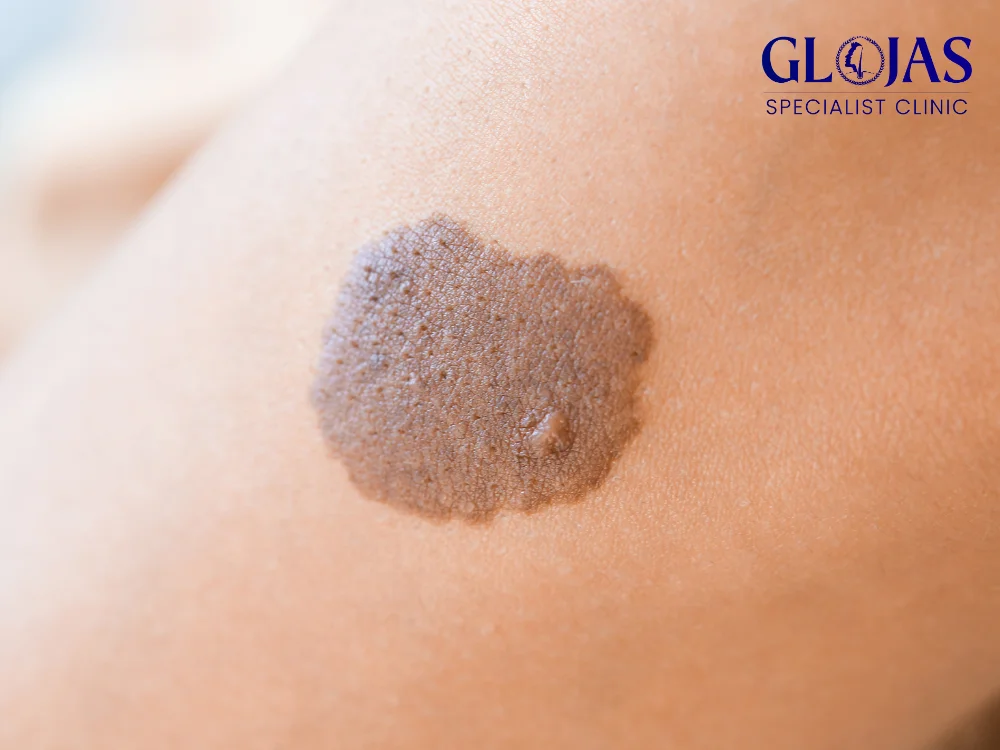
Birthmarks are common skin irregularities that many people are born with, but for some, these marks can affect their confidence. Fortunately, advancements in dermatological technology have made it easier than ever to remove or reduce the appearance of birthmarks. Among the most effective methods for birthmark removal is the Q-Switch ND (YAG) laser, known for its precision and minimal downtime. In this comprehensive guide, we’ll explore the top five methods for birthmark removal, with a special focus on Q-Switch ND (YAG) laser treatment. If you’ve been considering birthmark removal, this article will provide the information you need to make an informed decision. What Are Birthmarks? Before diving into removal options, it’s essential to understand what birthmarks are. Birthmarks are skin discolorations that appear at birth or shortly afterward. They come in various shapes, sizes, and colors. The most common types of birthmarks include: Pigmented Birthmarks: These are caused by an overgrowth of pigment-producing cells (melanocytes) in the skin. Examples include moles and café-au-lait spots. Vascular Birthmarks: Caused by abnormal blood vessels under the skin, vascular birthmarks like port-wine stains and hemangiomas are often red or purple in color. While some birthmarks are harmless, others can grow, change color, or cause health issues. Many people seek birthmark removal for cosmetic reasons, though in some cases, medical concerns may drive the decision. Top 5 Methods for Birthmark Removal There are several ways to treat or remove birthmarks, depending on the type, size, and location. Below are five of the most popular methods. 1. Q-Switch ND (YAG) Laser The Q-Switch ND (YAG) laser is one of the most effective methods for removing pigmented birthmarks, especially deeper lesions. This laser treatment works by delivering quick pulses of high-energy light, which is absorbed by the pigment in the birthmark. The pigment then breaks into smaller particles, which the body gradually removes. How Q-Switch ND (YAG) Laser Works Targeting Melanin: The Q-Switch ND (YAG) laser emits a specific wavelength of light that targets the melanin in pigmented birthmarks. It’s especially effective for dark birthmarks like moles and café-au-lait spots. Non-Invasive: This method is non-invasive, meaning it doesn’t require cuts or stitches. The skin remains intact, and the laser focuses only on the pigmented area. Minimal Downtime: One of the major advantages of this treatment is minimal recovery time. Most patients can resume their normal activities immediately after the procedure. Multiple Sessions: Depending on the birthmark’s size and depth, you may need several treatment sessions for optimal results. 2. Laser Therapy for Vascular Birthmarks For vascular birthmarks like port-wine stains, different lasers, such as pulsed dye lasers, are often used. These lasers target blood vessels, causing them to shrink and fade. Laser therapy for vascular birthmarks may require several sessions, but it’s generally very effective. 3. Surgical Excision In cases where laser treatment is ineffective or the birthmark is too large, surgical excision might be recommended. This involves physically cutting out the birthmark and stitching the skin back together. While this method is more invasive, it can be a permanent solution for certain types of birthmarks. 4. Cryotherapy Cryotherapy involves freezing the birthmark with liquid nitrogen, which destroys the abnormal skin cells. This method is often used for small pigmented birthmarks and can be done in a dermatologist’s office. However, it may cause scarring and is less commonly used than lasers or surgery. 5. Dermabrasion Dermabrasion is a skin-resurfacing technique that removes the top layer of skin using a rapidly rotating tool. This method can help reduce the appearance of raised or pigmented birthmarks but is more suitable for superficial marks. It’s less effective for deeper lesions compared to laser treatments. Why Choose Q-Switch ND (YAG) Laser for Birthmark Removal? When it comes to birthmark removal, especially for pigmented marks, the Q-Switch ND (YAG) laser stands out for several reasons: Precision: This laser targets only the melanin in the birthmark, leaving the surrounding skin unaffected. It’s ideal for sensitive areas like the face. Effectiveness: Multiple studies have shown that this laser is highly effective for removing deeper pigmentations and works well for stubborn birthmarks. Low Risk: There is minimal risk of scarring or skin damage when done by a qualified professional. The procedure is virtually painless, requiring only a numbing cream to reduce discomfort. The Q-Switch ND (YAG) laser is widely regarded as the gold standard for treating dark birthmarks, especially those that do not respond well to other treatments. What to Expect During and After Q-Switch ND (YAG) Laser Treatment If you’re considering Q-Switch ND (YAG) laser for birthmark removal, here’s what to expect: During the Procedure The treatment is quick, usually lasting 10-30 minutes depending on the size of the birthmark. A numbing cream may be applied to reduce any discomfort from the laser. The laser will emit pulses of light directly onto the birthmark, targeting the pigment. After the Procedure You may experience slight redness or swelling in the treated area, but this should subside within a few days. It’s important to avoid sun exposure and use sunscreen on the treated area to prevent hyperpigmentation. The birthmark will gradually fade over the course of several weeks as the body removes the fragmented pigment. Potential Risks and Side Effects of Laser Birthmark Removal While the Q-Switch ND (YAG) laser is generally safe, as with any medical procedure, there are some potential risks: Temporary Redness: The treated area may remain red or swollen for a few days. Hyperpigmentation or Hypopigmentation: There is a slight risk of either darkening or lightening of the skin in the treated area, but this usually resolves over time. Scarring: Rare, but possible, especially if proper aftercare is not followed. Most side effects are mild and temporary, but it’s important to consult a qualified dermatologist who can assess your skin type and birthmark to recommend the best course of action. FAQs About Birthmark Removal 1. How many sessions of Q-Switch ND (YAG) laser will I need? Typically, 3-5 sessions are needed for
Ultimate Guide to Surgery for Dimple: Everything You Need to Know
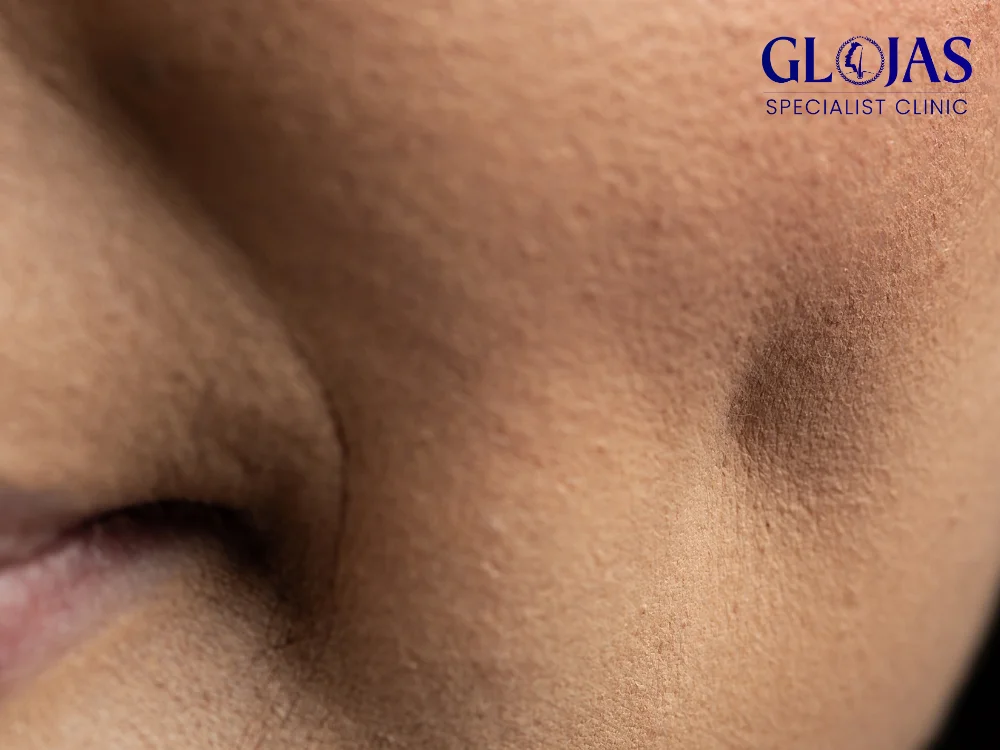
Dimples are often considered an attractive facial feature, and some people are naturally blessed with them. For others, however, dimples can be an aesthetic enhancement they’d love to have. Thanks to advances in cosmetic surgery, creating dimples is now possible through a procedure called dimpleplasty. If you’re considering getting dimples, you’ve likely encountered the term “surgery for dimple” and may be wondering what the procedure entails. In this guide, we’ll cover everything you need to know about surgery for dimples, from how it works to what to expect before and after the procedure. What is Dimple Surgery? Surgery for dimple, or dimpleplasty, is a cosmetic procedure designed to create permanent dimples in your cheeks. Dimples are naturally formed when there’s a small indentation in the muscle below the skin, which becomes visible when a person smiles. Dimpleplasty replicates this by creating a similar indentation through minimally invasive surgical techniques. The procedure is relatively simple and typically performed under local anesthesia. It’s become increasingly popular in recent years, especially with the influence of celebrities and social media promoting the aesthetic appeal of dimples. How Does Dimple Surgery Work? During surgery for dimple, the cosmetic surgeon will make a small incision inside your cheek, ensuring that there are no visible scars on the outside. A small portion of the cheek muscle and fat is then removed, and a suture is placed inside the cheek to create the dimple. Over time, as the tissue heals, the suture dissolves, leaving a permanent indentation, or dimple. The entire procedure usually takes around 30 minutes to an hour, depending on whether you’re getting one dimple or two. Most patients can return home the same day. Who is a Good Candidate for Dimple Surgery? Before undergoing any cosmetic procedure, it’s important to determine whether you’re a good candidate. Surgery for dimple is ideal for individuals who: Are in good health Have realistic expectations about the results Want to enhance their facial aesthetics with dimples Do not have significant issues with scarring or wound healing People with chronic health conditions or poor healing ability should consult with their doctor before considering the procedure. What to Expect Before the Procedure Before your dimple surgery, you’ll have a consultation with your cosmetic surgeon to discuss your goals and expectations. The surgeon will evaluate your facial structure, skin tone, and health history to determine if you’re a good fit for the procedure. You’ll also be advised to avoid certain medications, such as blood thinners, before the surgery to minimize the risk of excessive bleeding or complications. The Dimple Surgery Procedure: Step by Step Here’s a general breakdown of the surgery for dimple process: Consultation: Your surgeon will discuss your goals, review your health history, and determine the optimal placement for your dimples. Anesthesia: Local anesthesia is administered to numb the area, ensuring that you feel no pain during the surgery. Incision: A small incision is made inside the cheek where the dimple will be placed. This ensures no external scars. Tissue Removal: A tiny piece of the cheek muscle and fat is removed to create the dimple. Suturing: The surgeon places a dissolvable suture inside the cheek, pulling the skin inward to form the dimple. Recovery: Once the procedure is complete, you’ll be allowed to go home and start your recovery. Recovery and Aftercare: What to Expect The recovery process after surgery for dimple is typically quick and relatively painless. Here’s what you can expect during the recovery phase: Swelling and Bruising: You’ll experience some mild swelling and bruising, which is normal after any surgery. This usually subsides within a week or two. Soreness: Mild discomfort or soreness in the cheeks is common, but most patients find that over-the-counter pain relievers are sufficient to manage it. Diet: You may need to stick to soft foods for a few days after the procedure to avoid putting stress on the surgical site. Dimple Appearance: Initially, the dimples will be visible even when you’re not smiling, but as the tissue heals, they will only appear when you smile or move your facial muscles. You should be able to return to work or normal activities within a day or two, but it’s important to follow your surgeon’s aftercare instructions closely. Risks and Complications of Dimple Surgery While surgery for dimple is generally considered safe, like all surgical procedures, it carries some risks. Possible complications include: Infection Scarring Asymmetry between the dimples Prolonged swelling or bruising Numbness in the cheeks Choosing a skilled and experienced surgeon greatly reduces the likelihood of complications. It’s also essential to follow all post-operative care instructions to ensure a smooth recovery. How Much Does Dimple Surgery Cost? The cost of surgery for dimple can vary depending on the surgeon’s experience, the clinic’s location, and whether you’re getting one or both cheeks done. On average, the procedure can range from $1,500 to $3,000. Be sure to factor in the costs of consultations, post-operative care, and any medications that may be needed during recovery. Is Dimple Surgery Permanent? Yes, surgery for dimple is designed to create permanent results. Once the sutures dissolve, the tissue heals in a way that maintains the indentation, leaving a lasting dimple. However, it’s important to understand that while the dimples are permanent, aging or significant weight changes may affect the appearance of your dimples over time. FAQs About Surgery for Dimple Is dimple surgery painful? Dimple surgery is minimally invasive and performed under local anesthesia, so you won’t feel any pain during the procedure. After the surgery, mild discomfort or soreness may occur, but it can usually be managed with over-the-counter pain relief. How long does it take to recover from dimple surgery? Most people recover from surgery for dimple within a week. Swelling and bruising typically subside within 5 to 7 days, and you can resume normal activities within a day or two. Can dimple surgery be reversed? While dimple surgery is considered permanent, reversal is possible. However, reversing
Ultimate Guide to Effective Balding Treatment: 7 Proven Methods to Restore Your Hair
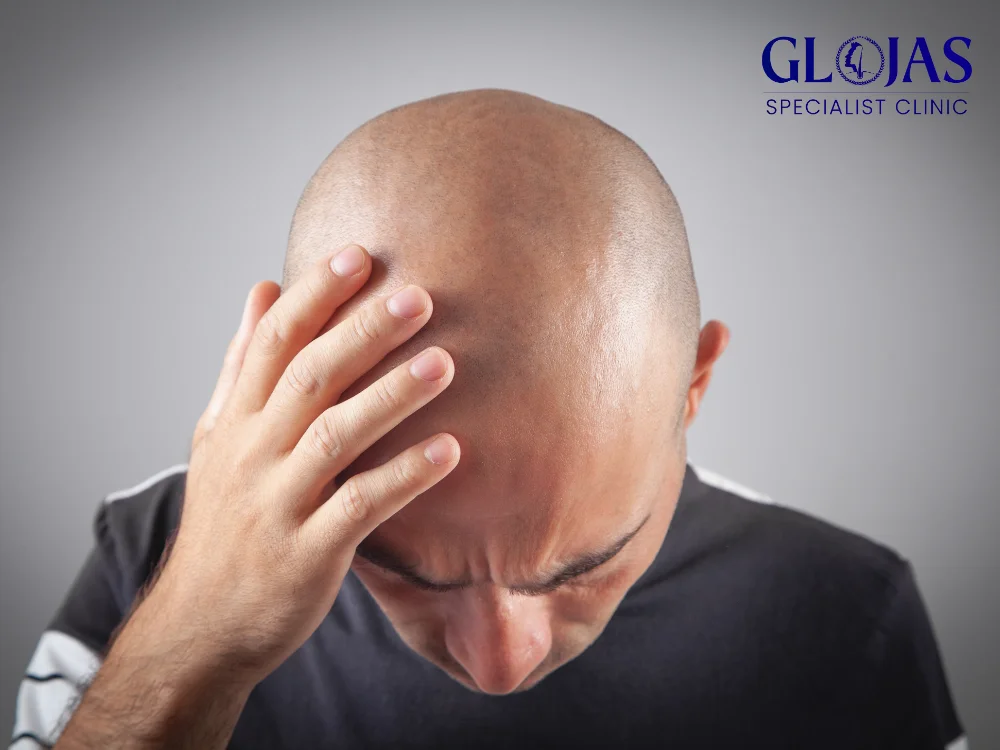
Hair loss, especially balding, can be distressing and can affect one’s self-esteem. Fortunately, advancements in medicine and technology have led to the development of several balding treatments that can slow down or reverse hair loss. Whether you’re dealing with a receding hairline or thinning hair, there are proven methods that offer real solutions. In this article, we’ll explore some of the most effective balding treatment options and how they can help you regain your confidence and appearance. Understanding Balding: Causes and Early Signs Before diving into balding treatments, it’s essential to understand what causes hair loss. Balding, medically known as androgenetic alopecia, is the most common type of hair loss in men and women. It’s often genetic, with hair thinning beginning around the temples and crown. Some key causes of balding include: Genetic factors: A family history of hair loss increases your chances of balding. Hormonal changes: Hormonal imbalances, especially an excess of dihydrotestosterone (DHT), can shrink hair follicles. Aging: As we age, hair growth naturally slows down, leading to thinning. Nutritional deficiencies: Lack of certain vitamins and minerals can weaken hair. Stress: Chronic stress can lead to temporary or permanent hair loss. Recognizing the early signs of balding is crucial for prompt treatment. These signs include a receding hairline, thinning hair on the crown, and excessive hair shedding. Top 7 Effective Balding Treatments When it comes to balding treatment, no one solution fits all. However, these seven methods are widely recognized as effective approaches for slowing down or reversing hair loss. 1. Minoxidil (Rogaine) Minoxidil is a topical medication that has been FDA-approved for treating hair loss. It works by increasing blood flow to hair follicles, promoting hair regrowth. Available in liquid or foam form, it’s typically applied twice a day. Advantages: Easy to use at home. Results visible within 4–6 months. Disadvantages: Continuous use is required to maintain results. May cause scalp irritation in some users. 2. Finasteride (Propecia) Finasteride is an oral medication that helps reduce the levels of DHT, a hormone responsible for shrinking hair follicles. By lowering DHT levels, finasteride slows hair loss and can even promote hair regrowth. Advantages: Particularly effective in treating male pattern baldness. Can significantly reduce hair thinning. Disadvantages: Not suitable for women. Possible side effects, including decreased libido. 3. Hair Transplant Surgery For those seeking a permanent balding treatment, hair transplant surgery is an excellent option. This procedure involves transplanting hair follicles from one area of the scalp (usually the back) to the balding areas. Types of Hair Transplants: FUT (Follicular Unit Transplantation): A strip of skin with hair is removed and divided into grafts. FUE (Follicular Unit Extraction): Individual hair follicles are extracted and transplanted. Advantages: Permanent solution with natural-looking results. High success rate for both men and women. Disadvantages: Expensive. Requires downtime for recovery. 4. Platelet-Rich Plasma (PRP) Therapy PRP therapy is a cutting-edge treatment that involves injecting platelet-rich plasma from your own blood into the scalp. This plasma contains growth factors that stimulate hair follicles, encouraging regrowth. Advantages: Minimally invasive. Uses the body’s own healing processes. Disadvantages: Multiple sessions are required. Not always effective for severe hair loss. 5. Low-Level Laser Therapy (LLLT) LLLT uses red light wavelengths to stimulate hair follicles, promoting hair regrowth and slowing down hair loss. This therapy can be done at home with a laser comb or helmet or in a clinic setting. Advantages: Safe and painless. Suitable for both men and women. Disadvantages: Results take several months. Requires continuous use to maintain hair growth. 6. Nutritional Supplements Hair growth can be significantly influenced by your diet. Supplements like biotin, vitamin D, iron, and zinc are essential for maintaining healthy hair. These vitamins and minerals help strengthen hair, prevent breakage, and promote regrowth. Advantages: Easy and affordable addition to your routine. Improves overall health in addition to hair growth. Disadvantages: Results may take longer to appear. Only effective for hair loss caused by nutritional deficiencies. 7. Scalp Micropigmentation If you’re looking for a non-invasive balding treatment that offers immediate results, scalp micropigmentation (SMP) might be ideal. This cosmetic tattooing procedure involves applying small dots of pigment to the scalp, mimicking the appearance of a shaved head or fuller hair. Advantages: Quick procedure with immediate results. No downtime or recovery required. Disadvantages: Requires regular touch-ups. Not a hair restoration solution but a cosmetic enhancement. Lifestyle Changes That Can Help with Hair Loss In addition to medical and cosmetic balding treatments, simple lifestyle changes can significantly slow down hair loss and improve hair health: Stress management: Practice relaxation techniques such as yoga, meditation, or deep breathing to lower stress levels. Balanced diet: Eat a diet rich in vitamins, minerals, and antioxidants to nourish hair follicles. Proper hair care: Avoid excessive styling, heat, and chemical treatments that can damage hair. How to Choose the Best Balding Treatment for You Selecting the right balding treatment depends on various factors, including the severity of your hair loss, your budget, and your overall health. Here’s how to make an informed decision: Consult a dermatologist or hair specialist: A professional can assess your hair loss and recommend the best treatment options based on your condition. Consider the pros and cons: Weigh the advantages and disadvantages of each treatment to find the one that aligns with your preferences. Be patient: Many balding treatments take several months to show visible results, so consistency and patience are key. Frequently Asked Questions (FAQs) 1. Is balding treatment permanent? Some balding treatments, like hair transplants, offer permanent results. However, medications like Minoxidil and Finasteride require continuous use to maintain hair regrowth. 2. Can balding be reversed? While certain treatments can slow or even reverse early-stage balding, it is often challenging to fully reverse advanced hair loss without surgical intervention. 3. How long does it take to see results from balding treatments? Results can vary based on the treatment. For example, Minoxidil may show results within 4–6 months, while hair transplants offer immediate visual improvement with full
How Much Does a Hair Transplant Cost in the Philippines? (2025)
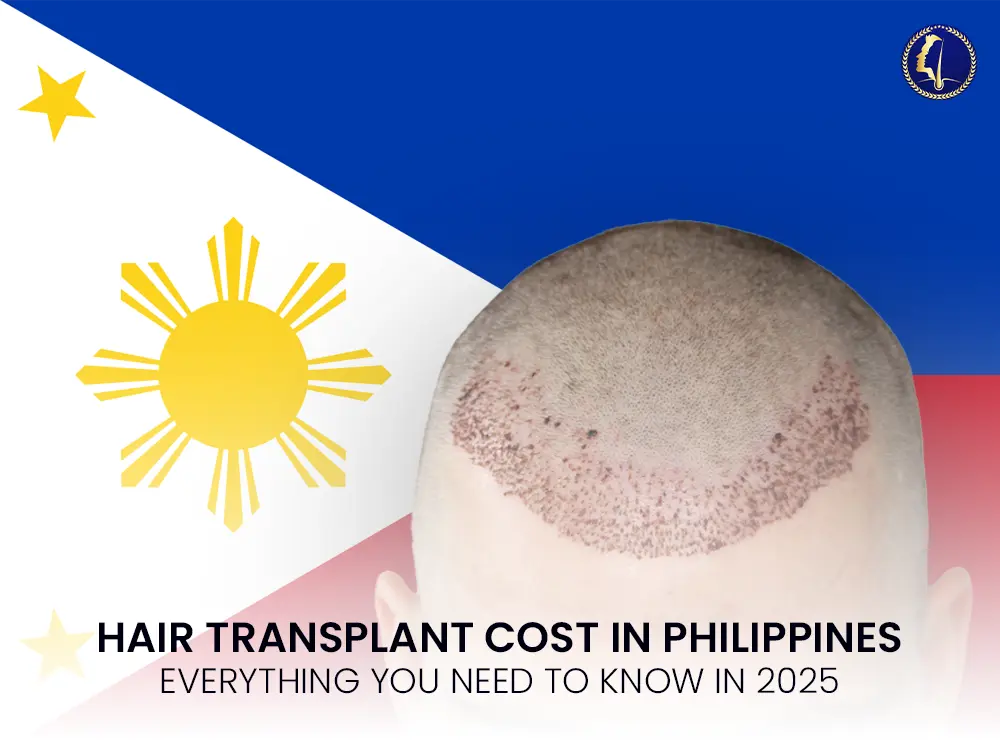
Hair Transplant Cost In Philippines Hair transplant procedures have gained popularity in the Philippines as an effective solution for hair loss. Understanding the hair transplant Philippines is essential for individuals considering this procedure. The cost can vary based on several factors, including the type of procedure, the number of grafts needed, and the clinic’s reputation. In this guide, we’ll explore the different types of hair transplants available, their costs, and factors that influence pricing. How Much Does a Hair Transplant Cost in the Philippines? The hair transplant cost in the Philippines typically ranges from PHP 80,000 to PHP 250,000, depending on the type of transplant and the extent of hair loss. The cost per graft usually ranges between PHP 25 to PHP 80, making the overall price highly dependent on the number of grafts required. Factors Affecting Hair Transplant Cost in the Philippines 1. Type of Hair Transplant Procedure There are three main types of hair transplant procedures available: Follicular Unit Extraction (FUE) – The most popular method, with costs ranging from PHP 100,000 to PHP 250,000. Follicular Unit Transplantation (FUT) – A more traditional approach, costing between PHP 80,000 to PHP 200,000. Direct Hair Implantation (DHI) – A more advanced technique, often priced higher at PHP 120,000 to PHP 300,000. 2. Number of Grafts Needed The total cost of a hair transplant in the Philippines depends largely on the number of grafts required. For instance: 1,000 grafts: PHP 80,000 – PHP 120,000 2,000 grafts: PHP 150,000 – PHP 200,000 3,000+ grafts: PHP 200,000 – PHP 300,000 3. Clinic Reputation and Location Renowned clinics with experienced surgeons often charge higher fees due to their expertise and success rates. Clinics in major cities like Manila, Cebu, and Davao tend to have higher prices than those in smaller towns. 4. Surgeon’s Experience A highly experienced and certified hair transplant surgeon will typically charge more. However, choosing a skilled specialist increases the chances of successful and natural-looking results. 5. Additional Treatments Some clinics offer platelet-rich plasma (PRP) therapy or low-level laser therapy (LLLT) to enhance hair growth post-transplant. These treatments can add PHP 10,000 – PHP 30,000 to the total cost. Is a Hair Transplant in the Philippines Worth the Cost? Compared to countries like the US or Singapore, the hair transplant cost in the Philippines is significantly lower, making it an attractive option for medical tourists. Filipino clinics use advanced technology, ensuring quality results at a fraction of the international price. FAQs About Hair Transplant Cost in the Philippines 1. What is the cheapest hair transplant procedure in the Philippines? FUT is typically the most affordable option, costing between PHP 80,000 to PHP 200,000. 2. Does insurance cover hair transplant costs? Most insurance policies do not cover hair transplant costs in the Philippines, as it is considered a cosmetic procedure. 3. How long does it take to see hair growth after a transplant? New hair growth begins within 3-6 months, with full results visible in 12-18 months. 4. Are there financing options available for hair transplants in the Philippines? Many clinics offer installment plans to help manage the hair transplant cost. 5. What is the success rate of hair transplants in the Philippines? With experienced surgeons, the success rate is 90-95%, provided proper post-surgical care is followed. Conclusion The hair transplant cost in the Philippines varies based on several factors, including the type of procedure, clinic reputation, and number of grafts required. With competitive pricing and high-quality services, the Philippines is a viable destination for individuals seeking affordable and effective hair restoration solutions. The hair transplant cost in the Philippines varies depending on several factors, including the type of procedure, the clinic’s location, and the number of grafts required. Many individuals seek affordable hair transplant cost options in the Philippines due to its competitive pricing compared to other countries. The hair transplant cost can range from PHP 80,000 to PHP 250,000, making it a cost-effective solution for those experiencing hair loss. Understanding the hair transplant cost in the Philippines is essential for making an informed decision, as different clinics offer various packages that impact the overall hair transplant cost. By researching clinics and comparing the hair transplant cost in the Philippines, individuals can find the best procedure to suit their budget and needs.
Hair Transplant Singapore Cost: Everything You Need To Know (2025)
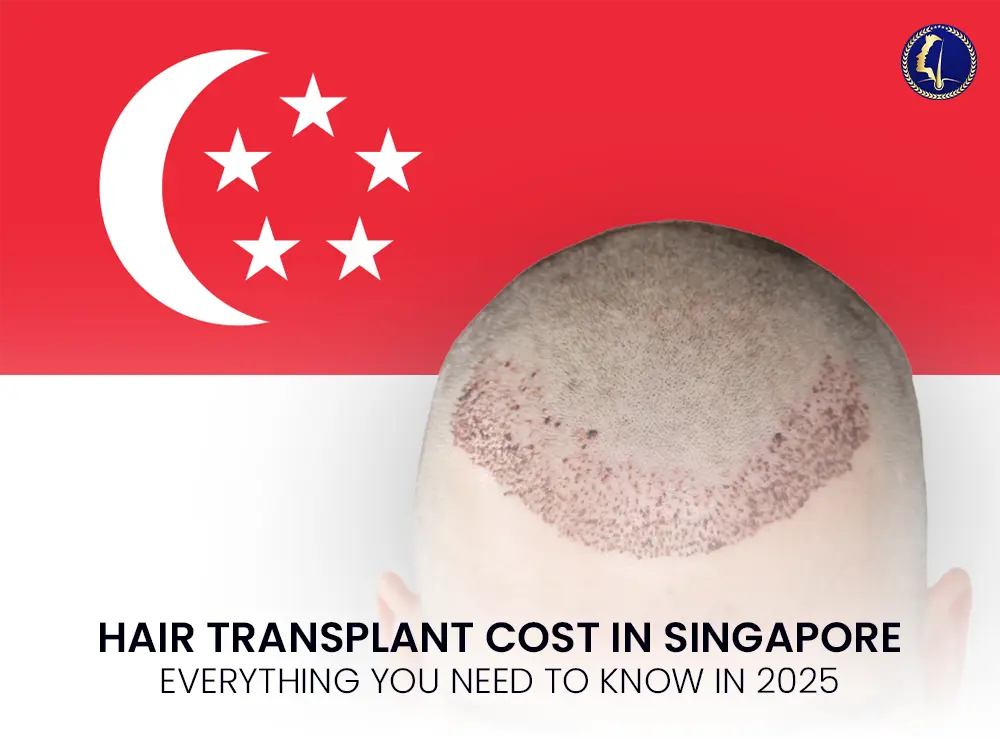
Hair Transplant Cost Singapore Hair loss can profoundly impact an individual’s confidence, self-esteem, and overall quality of life. In recent years, Follicular Unit Extraction (FUE) hair transplant procedures have become increasingly popular in Singapore, thanks to their minimally invasive nature and highly effective outcomes. This guide provides an in-depth look at FUE hair transplant costs in Singapore, highlighting crucial factors influencing pricing, and equipping you with the necessary insights to make an informed decision. Understanding FUE Hair Transplant: Follicular Unit Extraction (FUE) is an advanced hair restoration technique where individual hair follicles are carefully extracted from donor areas (usually the back or sides of the head) and meticulously implanted into thinning or balding regions. This technique ensures natural-looking results, minimal scarring, and quick recovery periods. Cost of FUE Hair Transplants in Singapore: The cost of FUE hair transplants in Singapore typically ranges from SGD 4,500 to SGD 16,000. This broad price range reflects significant variations in procedure complexity, the number of grafts required, and specific patient needs. Factors Influencing FUE Hair Transplant Cost: Several factors significantly influence the overall cost of FUE procedures, and understanding these can help prospective patients effectively manage their expectations and finances. 1. Extent of Hair Loss: The severity of hair loss directly impacts the cost, as extensive balding areas require more grafts to achieve a satisfactory density. Patients with minor thinning may only need 1,000 to 1,500 grafts, whereas extensive balding might necessitate upwards of 3,000 grafts, significantly increasing the overall procedure cost. 2. Procedure Complexity and Duration: FUE procedures involve individual extraction and implantation of follicles, making them inherently labor-intensive and time-consuming. The more grafts required, the longer and more complex the procedure becomes, thereby raising the cost. 3. Surgeon’s Expertise: The skill and experience of the surgeon play a critical role in determining the cost. Renowned hair transplant surgeons with a proven track record of exceptional results and advanced certifications often charge premium fees. However, investing in an experienced surgeon significantly increases the likelihood of superior, natural-looking outcomes and minimizes the risk of complications. 4. Clinic Reputation and Location: Clinics located in prestigious areas or those that offer advanced, state-of-the-art facilities tend to charge higher fees. Such facilities typically invest in the latest technology, ensuring greater comfort, safety, and superior results, thus justifying the additional expense. 5. Additional Treatments and Therapies: Many clinics offer complementary treatments to enhance the overall results of FUE hair transplants. These treatments might include platelet-rich plasma (PRP) therapy, low-level laser therapy, or specialized medications designed to improve graft survival and promote faster hair growth. Opting for such treatments can significantly enhance results but will add to the overall cost. 6. Hair and Skin Color Contrast: Patients with pronounced contrast between their hair and skin color, such as those with fair skin and dark hair, might require more grafts to achieve visually pleasing density and coverage. Additional sessions may be necessary to achieve optimal results, influencing the total procedure cost. Benefits of FUE Hair Transplants: Minimal Scarring: FUE does not involve incisions or linear scars, ensuring a cosmetically pleasing outcome. Natural Results: Individual graft extraction and implantation provide precise control over hair direction, angle, and density, creating highly natural-looking results. Quick Recovery: Due to its minimally invasive nature, patients typically experience shorter recovery periods and less post-operative discomfort compared to traditional hair transplant methods like FUT (Follicular Unit Transplantation). Drawbacks of FUE Hair Transplants: Higher Cost per Graft: Due to its meticulous, individualized approach, FUE tends to be more expensive per graft compared to methods like FUT. Procedure Duration: The individualized graft extraction and implantation process can be lengthy, potentially requiring multiple sessions for extensive hair loss cases. Frequently Asked Questions (FAQs): 1. Is an FUE hair transplant painful? FUE procedures are performed under local anesthesia, ensuring minimal discomfort during surgery. Post-surgery, mild discomfort can occur but is generally manageable with prescribed pain medication. 2. Are FUE hair transplant results permanent? Yes. Hair follicles transplanted during the FUE procedure are typically resistant to genetic hair loss patterns, resulting in permanent hair restoration. 3. How long is the recovery period after an FUE hair transplant? Most patients experience significant healing within 5 to 10 days post-procedure. Complete healing typically occurs within two weeks, allowing a quick return to daily activities. 4. Can women undergo FUE hair transplant procedures? Absolutely. FUE is suitable for women experiencing thinning hair or pattern baldness. The procedure is tailored to meet specific aesthetic goals and hair restoration needs for women as well as men. 5. When will I see the full results from an FUE hair transplant? Initial hair growth can be visible around 4-6 months after the procedure. However, full, matured results typically take between 12 to 18 months as hair cycles stabilize and reach optimal density. Conclusion: FUE hair transplants in Singapore provide a highly effective, long-lasting solution to hair loss, offering natural-looking results and minimal downtime. While the costs vary significantly based on individual requirements and factors discussed above, careful consideration and consultation with a skilled surgeon can ensure you achieve excellent outcomes and regain your confidence. When considering a hair transplant in Singapore, understanding the hair transplant cost is crucial. Hair transplant cost in Singapore can vary widely depending on multiple factors, including the clinic’s reputation, the surgeon’s experience, and the type of procedure chosen. While comparing hair transplant costs in Singapore, patients must carefully evaluate if the lowest hair transplant cost truly offers the best value or if a slightly higher hair transplant cost could ensure better results and fewer complications. To accurately plan for the hair transplant cost, it’s advisable to schedule a consultation to discuss personalized hair transplant cost breakdowns. Moreover, the hair transplant cost in Singapore is not only influenced by surgical fees but also by additional treatments and aftercare expenses. Many clinics offer packages to help manage the hair transplant cost effectively, but it’s essential to clarify what’s included to avoid hidden costs. When researching hair transplant cost options in Singapore, consider factors like location
Rawatan Parut Jerawat : Solusi Profesional untuk Kulit Lebih Halus dan Sempurna
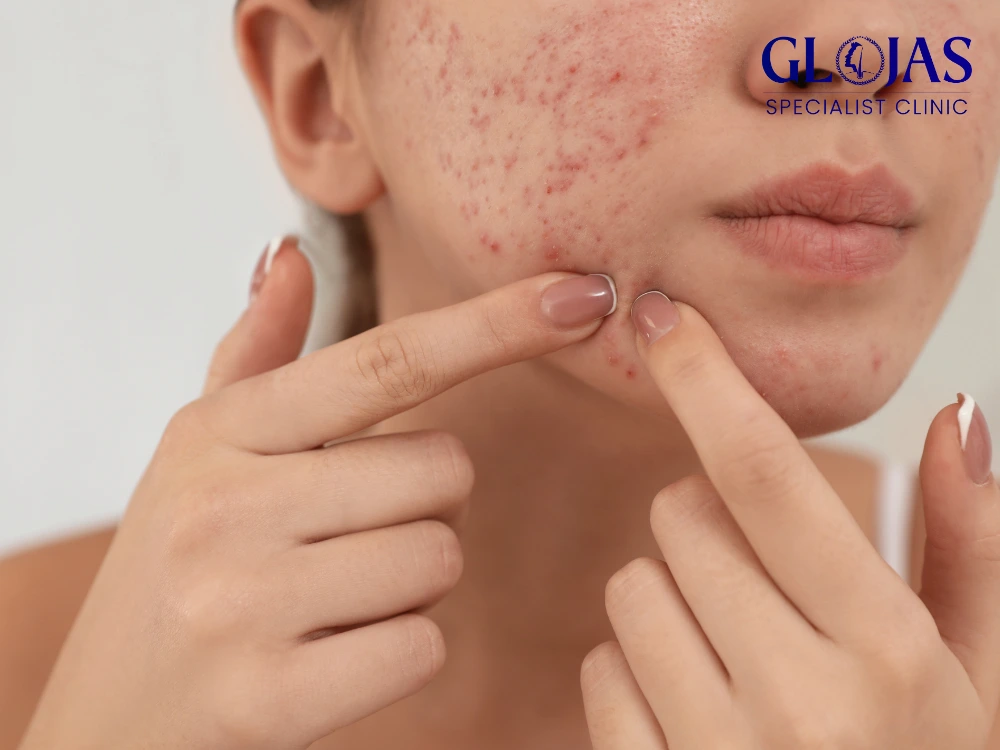
Rawatan parut jerawat merupakan solusi penting bagi salah satu masalah kulit yang paling umum dihadapi oleh mereka yang pernah mengalami jerawat, terutamanya di kalangan remaja dan dewasa muda. Walaupun jerawat itu sendiri boleh menjadi cabaran, parut yang ditinggalkannya sering kali lebih menjejaskan keyakinan diri. Dalam artikel ini, kita akan meneroka punca parut jerawat, jenis-jenisnya, langkah pencegahan, serta pelbagai rawatan parut jerawat yang tersedia untuk mengurangkannya. Apa Itu Parut Jerawat? Parut jerawat terbentuk setelah proses penyembuhan jerawat. Apabila jerawat mengalami keradangan yang teruk, tisu kulit di sekelilingnya boleh rosak, dan proses rawatan parut jerawat ini mungkin tidak menghasilkan kulit yang sempurna. Parut jerawat muncul dalam pelbagai bentuk dan saiz, bergantung kepada tahap kerosakan yang berlaku. Parut jerawat tidak hanya menjejaskan penampilan kulit, tetapi juga boleh mempengaruhi keyakinan diri dan emosi seseorang. Oleh itu, penting untuk memahami apa yang menyebabkan parut ini dan bagaimana cara yang berkesan untuk rawatan parut jerawat. Kenali Punca sebelum Dapatkan Rawatan Parut Jerawat 1. Keterukan Jerawat Salah satu punca utama parut jerawat adalah keterukan jerawat itu sendiri. Jerawat yang lebih teruk, seperti jerawat cystic, biasanya menyebabkan kerosakan yang lebih dalam pada kulit dan meninggalkan parut yang lebih ketara. Semakin teruk jerawat, semakin besar kemungkinan untuk mengalami parut. 2. Pengendalian yang Tidak Betul Menggigit, memicit, atau menggaru jerawat boleh menyebabkan kerosakan tambahan pada kulit dan meningkatkan risiko pembentukan parut. Ketika jerawat dirawat dengan cara yang tidak betul, seperti memaksa keluarnya isi, ia bukan sahaja memperlambat proses penyembuhan tetapi juga boleh menyebabkan jangkitan. 3. Keturunan Faktor genetik juga memainkan peranan dalam pembentukan parut jerawat. Individu yang mempunyai sejarah keluarga dengan parut jerawat mungkin lebih cenderung untuk mengalami masalah yang sama. Ini menunjukkan bahawa faktor genetik boleh mempengaruhi cara kulit sembuh setelah jerawat. 4. Penuaan Seiring dengan bertambahnya usia, keanjalan kulit berkurangan, dan pengeluaran kolagen menjadi lebih perlahan. Ini menjadikan parut jerawat lebih ketara dengan bertambahnya usia. Kulit yang lebih tua mungkin tidak dapat sembuh secepat kulit yang lebih muda, menjadikan parut lebih sukar untuk dihilangkan. 5. Faktor Lain Selain daripada punca di atas, terdapat beberapa faktor lain yang juga boleh menyumbang kepada pembentukan parut jerawat: – Pendedahan kepada Matahari : Sinar UV boleh menyebabkan perubahan warna pada kulit dan memperburuk penampilan parut jerawat.– Diet dan Gaya Hidup : Diet yang tidak seimbang dan gaya hidup yang tidak sihat boleh mempengaruhi proses penyembuhan kulit.– Masalah Hormon : Fluktuasi hormon, terutamanya pada wanita, boleh menyebabkan jerawat dan seterusnya parut. Jenis-jenis Parut Jerawat yang Sesuai untuk Rawatan Parut Jerawat Terdapat tiga jenis utama parut jerawat, masing-masing dengan penampilan dan rawatan yang berbeza: 1. Parut Depresi (Atrophic Scars) Parut ini terjadi apabila tisu kulit hilang, menghasilkan lekukan atau lubang di permukaan kulit. Terdapat beberapa subkategori parut depresi: – Ice Pick Scars : Parut ini berbentuk tajam dan dalam, menyerupai kesan yang ditinggalkan oleh jarum. Ia sering kali sukar untuk dirawat kerana kedalamannya.– Boxcar Scars : Parut ini lebih lebar dengan tepi yang tajam. Mereka biasanya lebih mudah untuk dirawat berbanding parut ice pick.– **Rolling Scars**: Parut ini mempunyai tepi yang lebih lembut dan memberikan penampilan yang tidak rata pada kulit. 2. Parut Angkat (Hypertrophic Scars) Parut angkat berlaku apabila terdapat pengeluaran kolagen yang berlebihan semasa penyembuhan. Parut ini muncul sebagai tonjolan yang terangkat dari permukaan kulit dan boleh menjadi gatal atau tidak selesa. Rawatan parut angkat mungkin melibatkan suntikan steroid untuk mengurangkan saiznya. 3. Keloid Keloid adalah sejenis parut yang tumbuh melebihi kawasan asal luka. Ia boleh menjadi lebih besar daripada parut biasa dan mungkin terasa gatal. Keloid mungkin memerlukan rawatan yang lebih intensif seperti pembedahan atau terapi laser untuk mengurangkan penampilannya. Langkah-langkah Pencegahan Sebelum membincangkan rawatan, penting untuk mengetahui langkah-langkah pencegahan bagi mengurangkan risiko parut jerawat: 1. Jangan Picit Jerawat Mengeluarkan jerawat secara manual boleh merosakkan kulit dan meningkatkan risiko parut. Jika anda merasa perlu merawat jerawat, lebih baik menggunakan produk yang sesuai daripada memicitnya. 2. Gunakan Produk Perawatan Kulit yang Betul Pilih produk yang sesuai dengan jenis kulit anda dan mengandungi bahan anti-radang dan pelembap. Elakkan produk yang berpotensi mengiritasi kulit. 3. Pelihara Kebersihan Kulit Membersihkan wajah secara berkala membantu mengelakkan jerawat dan mengurangkan keradangan. Gunakan pembersih yang lembut dan tidak mengandungi bahan kimia keras. 4. Lindungi Kulit daripada Matahari Penggunaan pelindung matahari setiap hari dapat membantu melindungi kulit dari sinar UV, yang boleh menyebabkan perubahan warna pada parut jerawat. Pilih pelindung matahari dengan SPF yang sesuai. View this post on Instagram A post shared by Aesthetic Clinic Kuala Lumpur | Plastic Surgery, Hair Transplant (@glojasspecialist) Rawatan Parut Jerawat Jika anda sudah mengalami parut jerawat dan ingin mencuba rawatan, terdapat pelbagai pilihan yang boleh dipertimbangkan: 1. Krim dan Gel Topikal Krim dan gel yang mengandungi bahan aktif seperti retinol, asid salisilik, dan vitamin C boleh membantu memperbaiki tekstur kulit dan mengurangkan penampilan parut. Retinol, khususnya, dikenali untuk merangsang pengeluaran kolagen dan mempercepatkan proses regenerasi kulit. Anda juga boleh mencari produk yang mengandungi asid hyaluronik, yang membantu melembapkan kulit. 2. Terapi Laser Rawatan laser adalah salah satu pilihan yang berkesan untuk mengatasi parut jerawat. Terdapat beberapa jenis laser yang boleh digunakan: – Laser CO2 : Menghilangkan lapisan atas kulit dan merangsang pengeluaran kolagen. Ini adalah pilihan yang baik untuk parut yang dalam dan ketara.– Laser Erbium : Lebih lembut pada kulit, dan sesuai untuk parut yang kurang dalam. Prosedur ini biasanya memerlukan waktu pemulihan yang lebih singkat berbanding laser CO2. 3. Mikrodermabrasi Mikrodermabrasi adalah prosedur yang melibatkan pengelupasan lapisan atas kulit menggunakan butiran halus. Ia membantu mengurangkan penampilan parut dan meningkatkan tekstur kulit. Prosedur ini selamat dan tidak memerlukan masa pemulihan yang panjang. Sesetengah individu mungkin memerlukan beberapa sesi untuk melihat hasil yang ketara. 4. Terapi Pengelupasan Kimia Terapi pengelupasan kimia menggunakan larutan kimia untuk menghilangkan lapisan atas kulit. Ia boleh membantu mengurangkan parut dan meningkatkan penampilan kulit. Terdapat pelbagai jenis pengelupasan kimia, dari yang ringan (seperti asid glikolik) hingga yang lebih mendalam (seperti asid trikloroasetat). Jenis yang digunakan bergantung kepada kedalaman parut dan jenis kulit. 5. Microneedling Microneedling adalah prosedur yang melibatkan penggunaan jarum kecil untuk merangsang pengeluaran kolagen. Prosedur ini membantu mengurangkan penampilan parut jerawat dan meningkatkan tekstur
